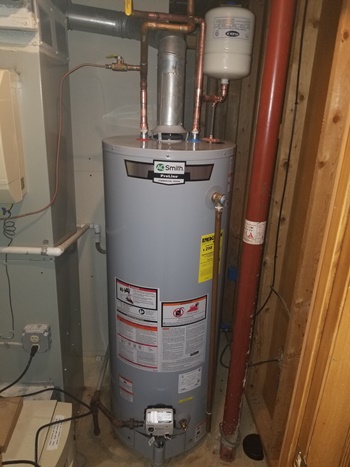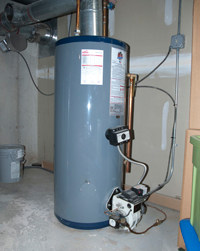Easy Guide to Maintaining Your Home's Hot Water System
Easy Guide to Maintaining Your Home's Hot Water System
Blog Article
The article in the next paragraphs relating to Water Heater Maintenance Tips You Can't Afford to Forget is unquestionably entertaining. You should read it.

Warm water is vital for everyday comfort, whether it's for a rejuvenating shower or washing recipes. To guarantee your warm water system runs effectively and lasts longer, routine maintenance is key. This short article supplies useful pointers and insights on exactly how to keep your home's warm water system to prevent disturbances and expensive repair work.
Introduction
Preserving your home's warm water system may seem challenging, however with a few easy steps, you can ensure it operates smoothly for years ahead. This overview covers everything from recognizing your hot water system to do it yourself maintenance pointers and understanding when to call in specialist help.
Importance of Keeping Your Hot Water System
Routine maintenance not only extends the lifespan of your warm water system yet also ensures it operates efficiently. Ignoring maintenance can result in lowered effectiveness, higher power bills, and also premature failing of the system.
Indications Your Hot Water System Requirements Upkeep
Knowing when your hot water system needs interest can prevent major problems. Keep an eye out for indications such as irregular water temperature, odd sounds from the heater, or rustic water.
Recognizing Your Hot Water System
Before diving into upkeep tasks, it's practical to recognize the basic elements of your warm water system. Typically, this includes the hot water heater itself, pipelines, anode rods, and temperature controls.
Regular Monthly Upkeep Tasks
Normal monthly checks can aid capture small issues before they intensify.
Purging the Water Heater
Purging your water heater gets rid of sediment accumulation, boosting efficiency and lengthening its life.
Checking and Replacing Anode Rods
Anode rods avoid deterioration inside the tank. Inspecting and changing them when worn out is important.
Checking and Changing Temperature Level Settings
Readjusting the temperature settings makes sure optimal efficiency and safety and security.
DIY Tips for Upkeep
You can perform numerous upkeep jobs yourself to keep your hot water system in top problem.
Checking for Leaks
Regularly check pipes and connections for leakages, as these can bring about water damages and greater costs.
Examining Stress Alleviation Valves
Testing the pressure safety valve guarantees it operates appropriately and protects against too much stress accumulation.
Insulating Pipes
Insulating hot water pipes decreases heat loss and can save power.
When to Call a Specialist
While do it yourself maintenance is helpful, some problems require specialist experience.
Facility Problems Requiring Specialist Aid
Examples include significant leaks, electric issues, or if your water heater is regularly underperforming.
Routine Specialist Upkeep Advantages
Specialist maintenance can include thorough inspections, tune-ups, and making certain conformity with safety criteria.
Final thought
Normal maintenance of your home's warm water system is vital for efficiency, long life, and cost financial savings. By complying with these pointers and understanding when to look for specialist help, you can make certain a reputable supply of hot water without unforeseen disruptions.
How to Maintain an Instant Hot Water Heater
Before tinkering with your hot water heater, make sure that it’s not powered on. You also have to turn off the main circuit breaker and shut off the main gas line to prevent accidents. Also turn off the water valves connected to your unit to prevent water from flowing into and out of the appliance. 2. When you’re done, you have to detach the purge valves’ caps. These look like the letter “T†and are situated on either side of the water valves. Doing so will release any pressure that has accumulated inside the valves while at the same time avoid hot water from shooting out and burning your skin. 3. When the purge valves’ caps are removed, you have to connect your hosing lines to the valves. Your unit should have come with three hoses but if it didn’t, you can purchase these things from any hardware or home repair shops. You can also get them from retail stores that sell water heating systems. Read the user’s manual and follow it to complete this task properly. When the hosing lines are connected, open the purge port’s valves. 4. You should never use harsh chemical cleaners or solutions when cleaning your unit. Make use of white vinegar instead. It should be undiluted and you’ll probably use about 2 gallons. 5. Now flush your water heater. This task should probably take about 40 minutes. We can’t give you specific directions for this because the procedure is carried out depending on the type, model and brand of your heater. With that being said, refer to the user’s manual. 6. When you’re done draining the unit, you have to turn off the purge port valves again. Remove the hosing lines that you earlier installed on each of the water valves. Put the valve caps (purge port) back in their respective places and be very careful so as not to damage the rubber discs that are found inside these caps. 7. Now that everything’s back in place, check your user’s manual again to find out how to reactivate your water heating system. 8. Once it is working, turn one of your hot water faucets on just to let air pass through the heater’s water supply pipes. Leave the tap on until water flows smoothly out of it. https://www.orrplumbing.com/blog/2014/september/how-to-maintain-an-instant-hot-water-heater/

Do you like reading up on Tips For Maintaining Your Hot Water Heater? Post feedback directly below. We'd be glad to find out your opinion about this content. We are looking forward that you come back again before long. Appreciated our post? Please share it. Let somebody else find it. We love your readership.
Call Today Report this page